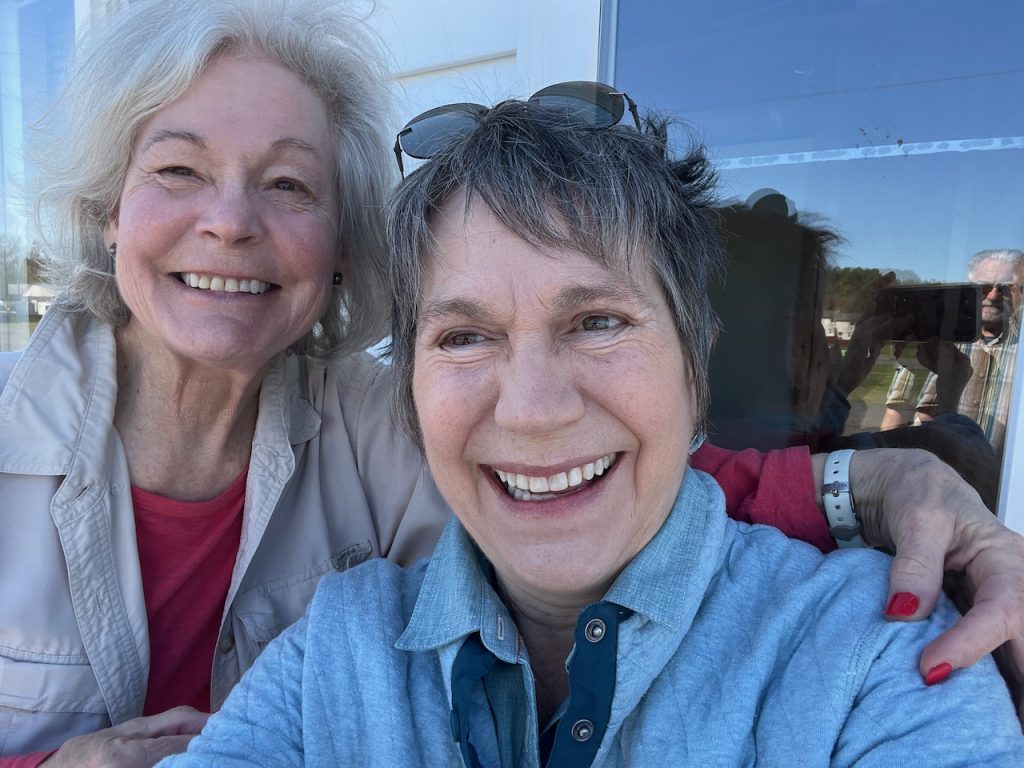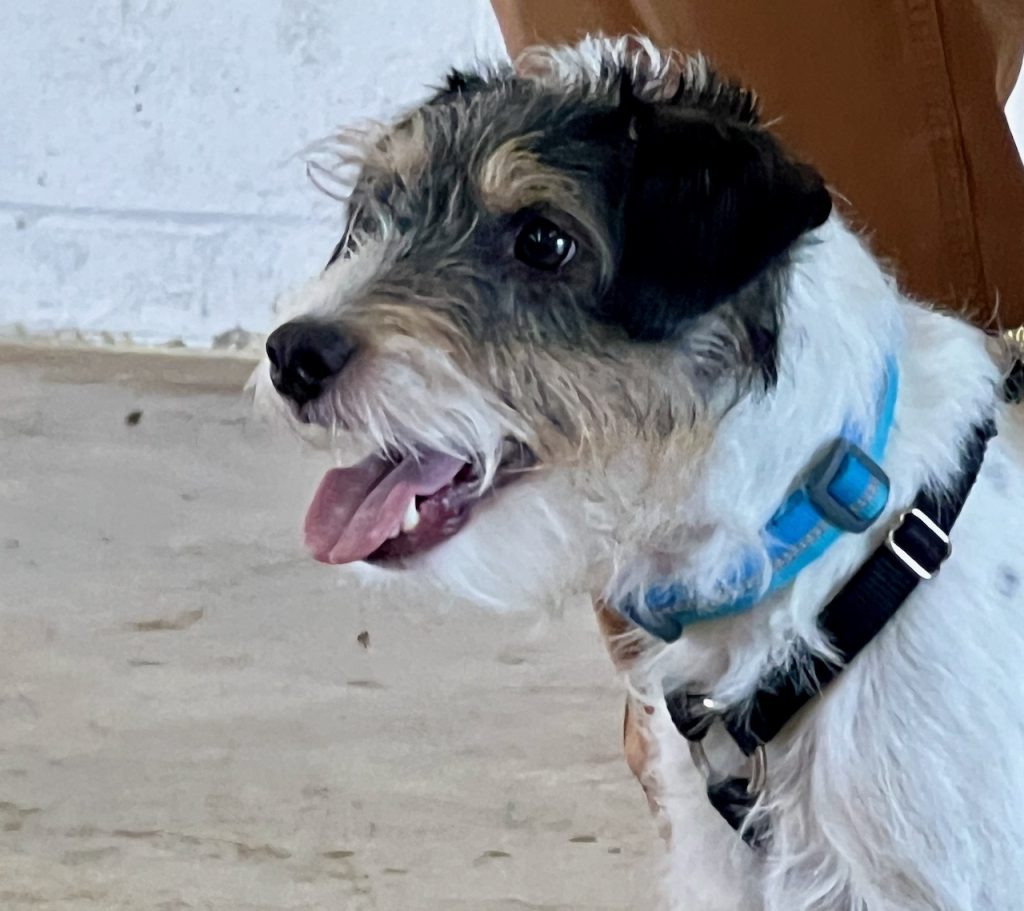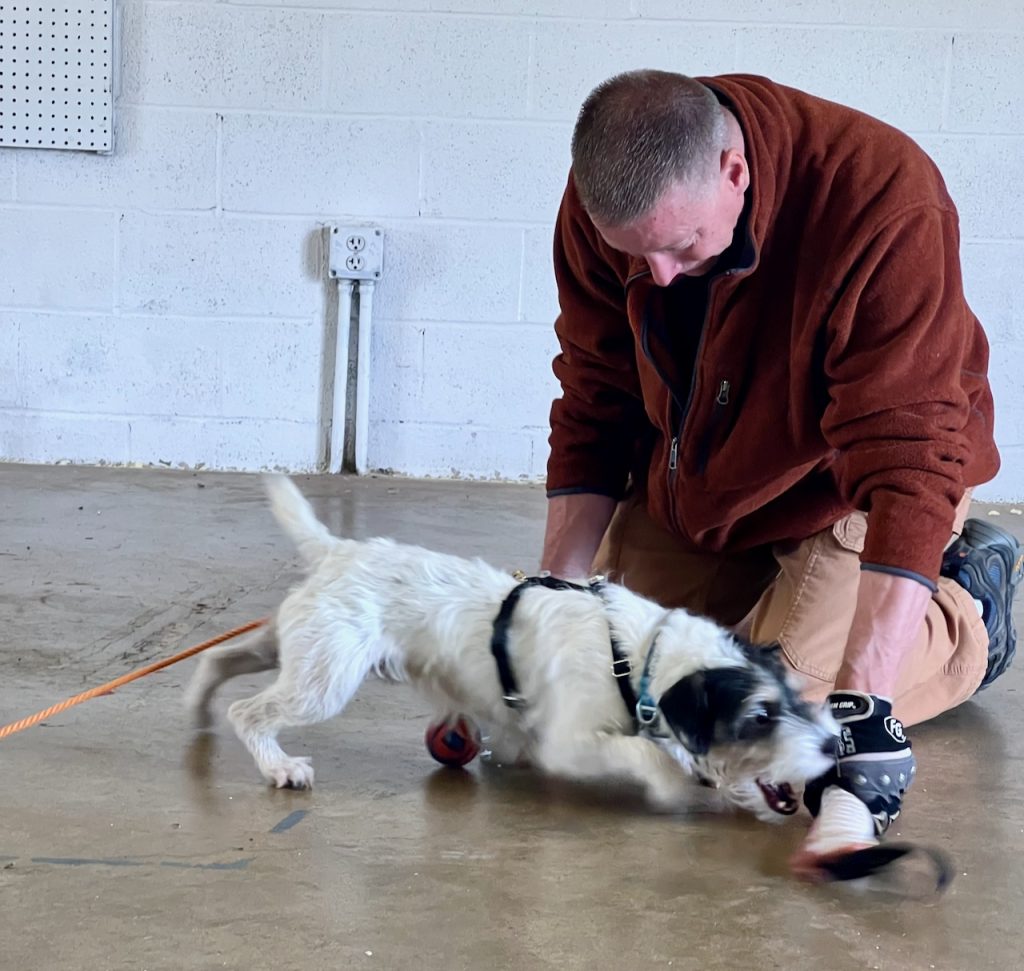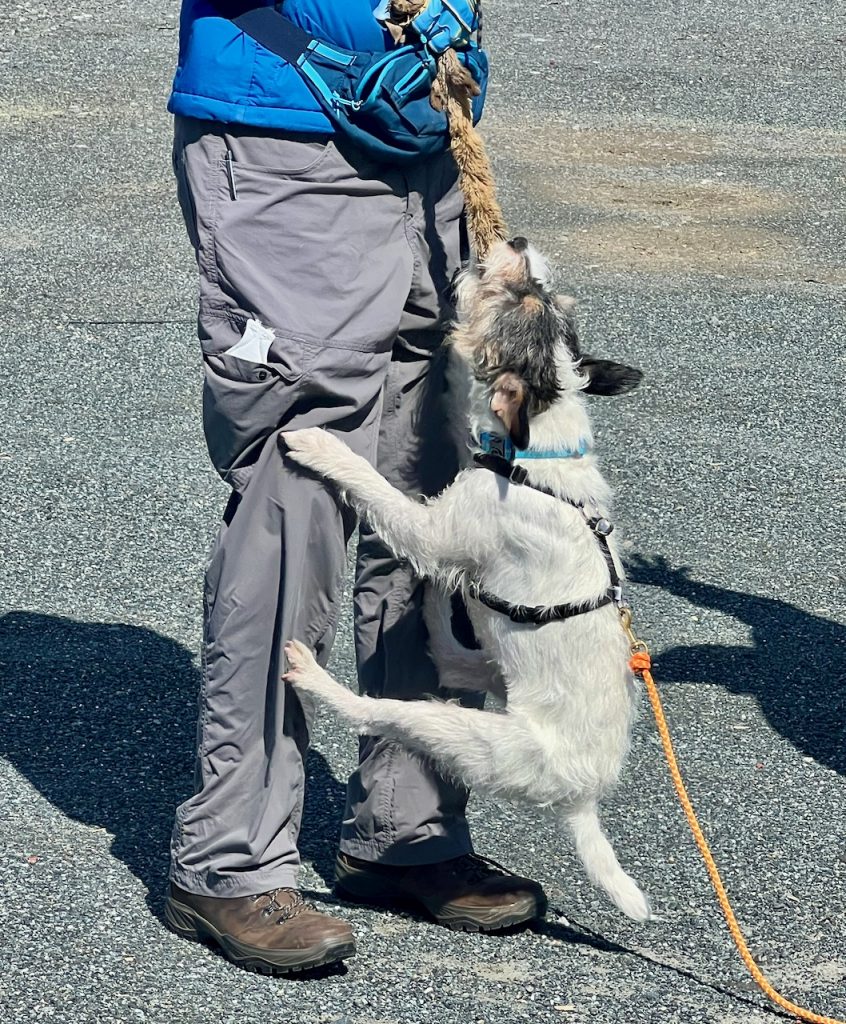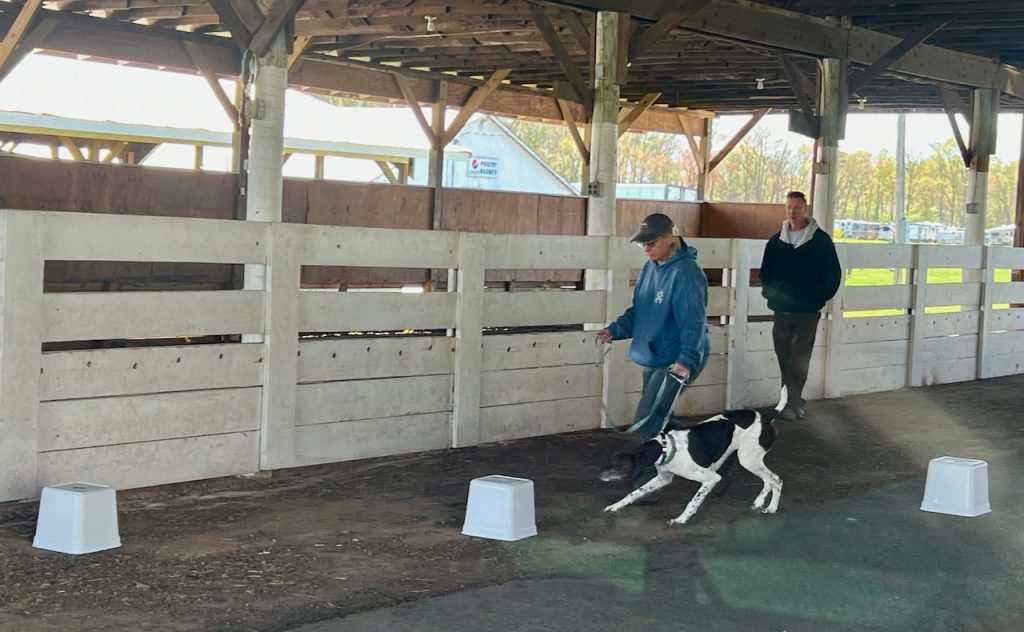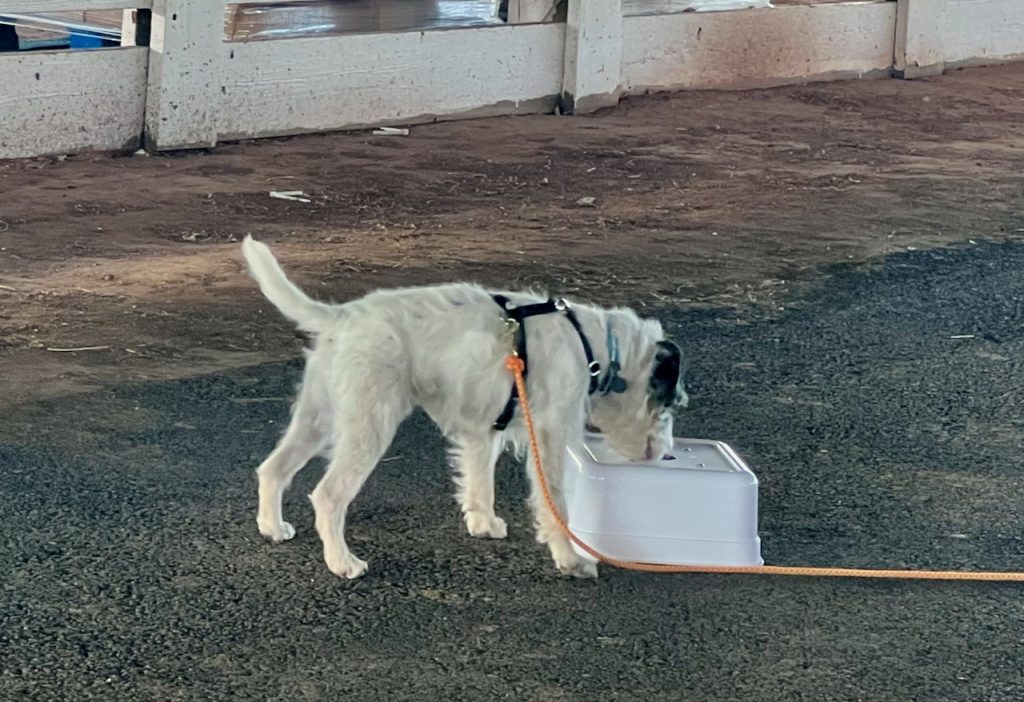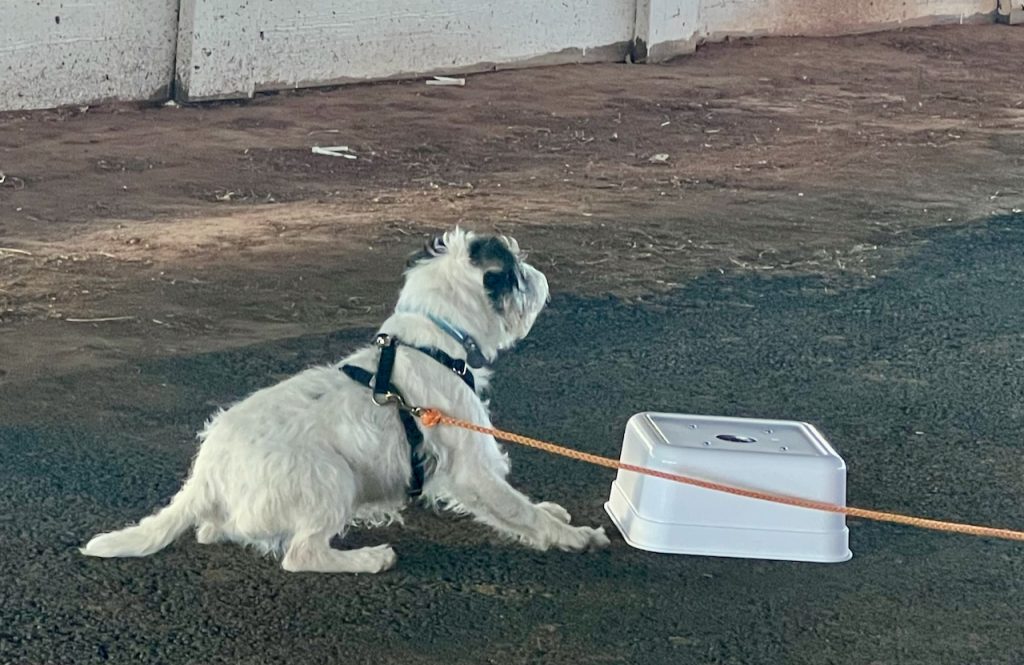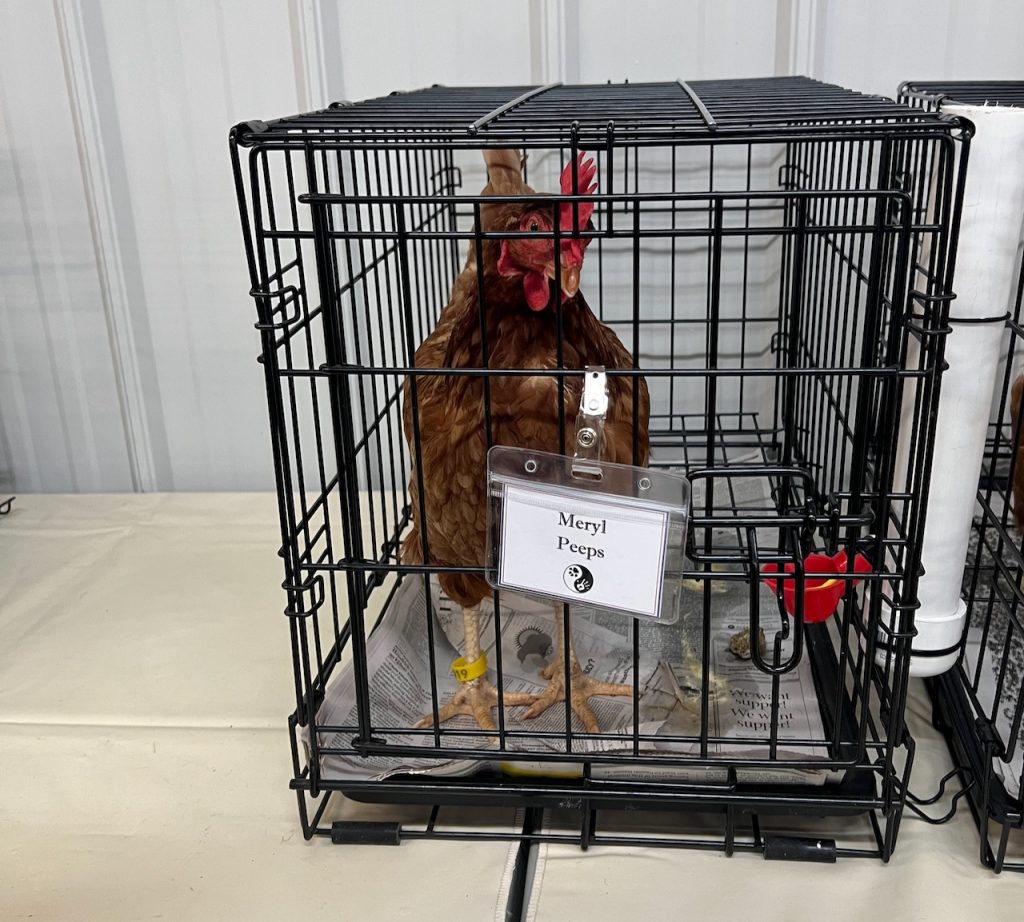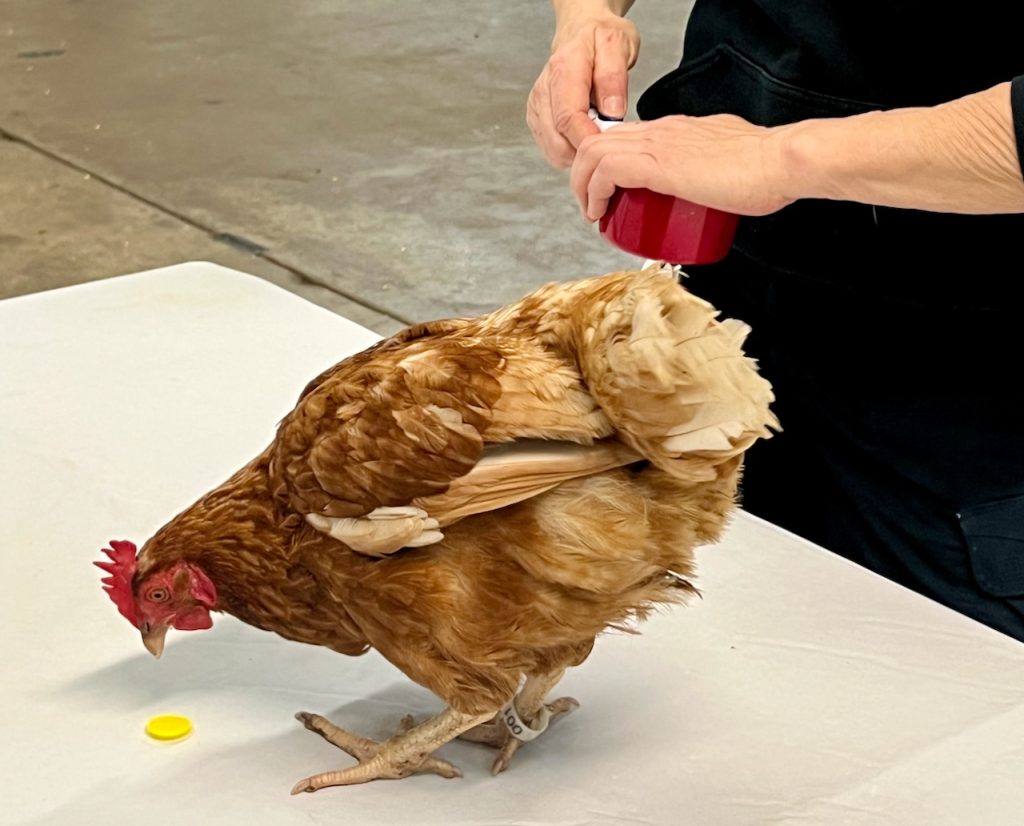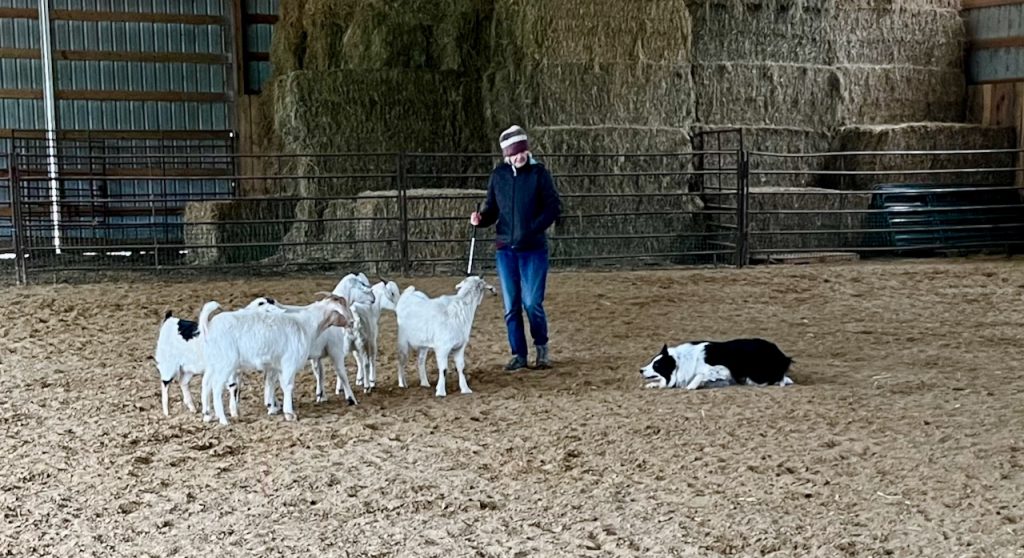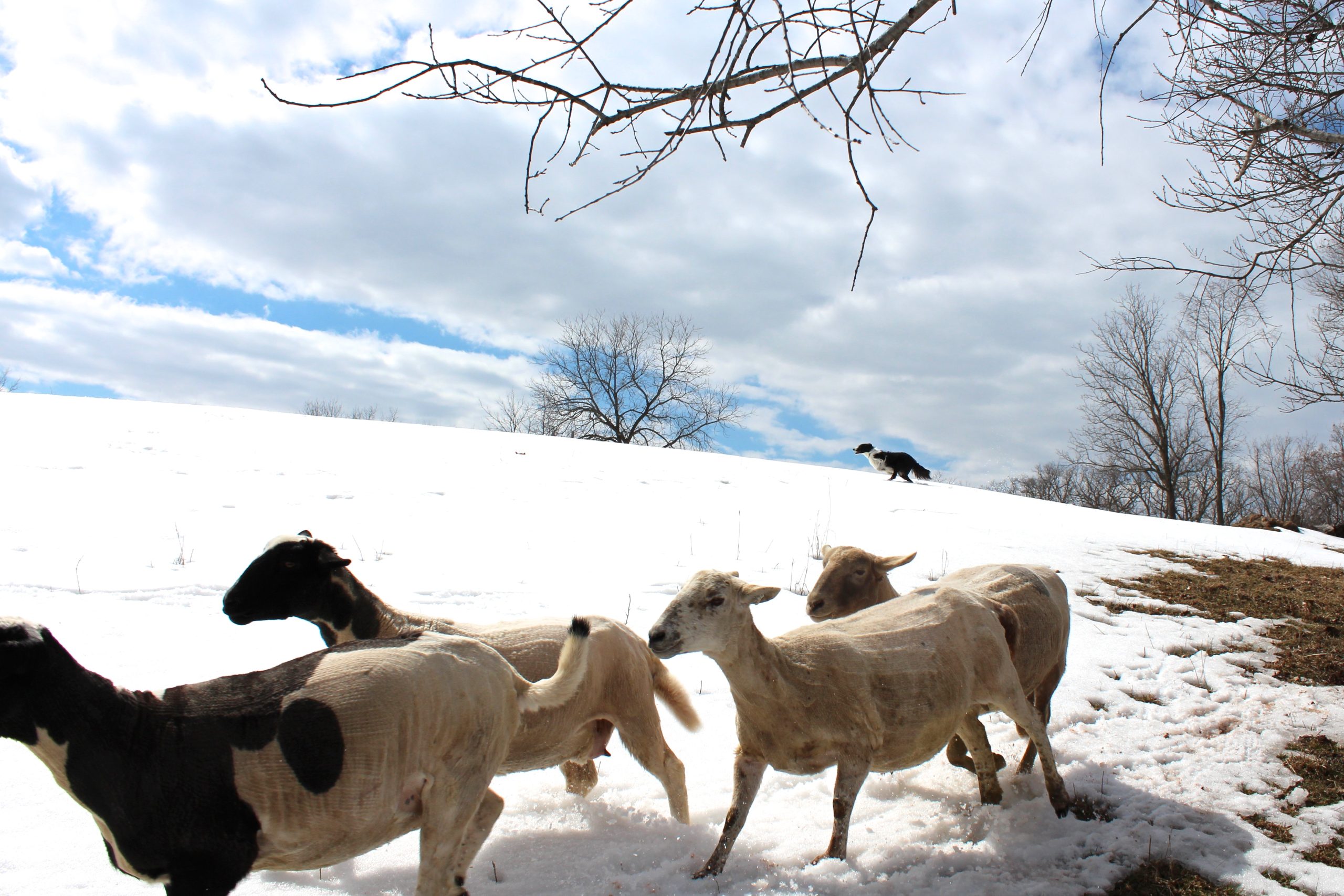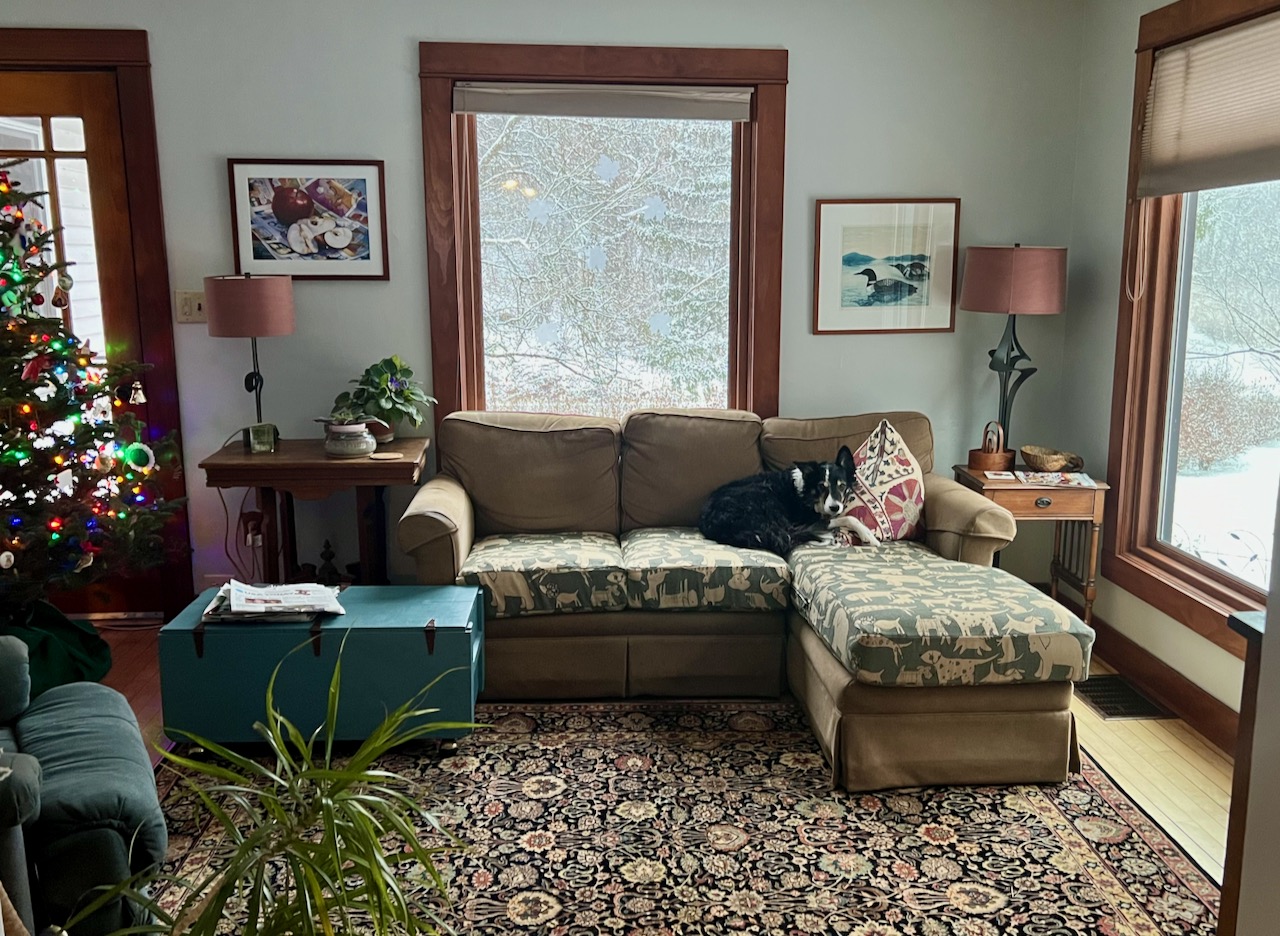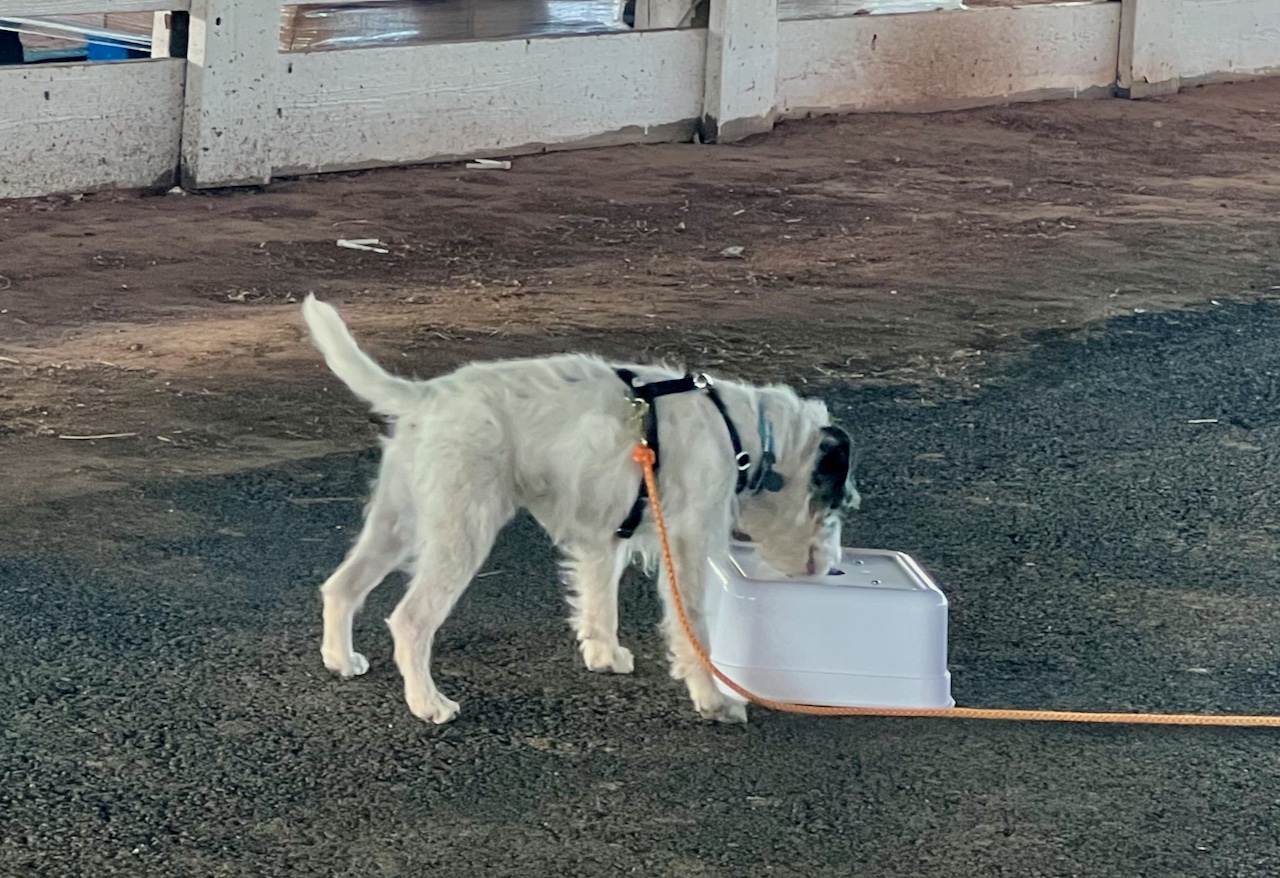
Well, how fun was that? Last weekend I was at the “Im-PECK-able Training Seminar” put on by Craig Schultz and Sally Dickinson for the K9 Behavior Consortium in Manassas, VA. I went primarily to learn more about sniffer dogs for my next mystery novel (wheeeee!), but reveled in spending time with some great dogs, and some way cool, interesting people. Along with Meryl Peeps. The chicken.
Bonus: I got to spend time in person with kick-ass writer and dog handler, Cat Warren, of the NYT best selling book, What The Dog Knows. (You’ve read it, right?) Cat and I have spent the last 5 + years working together on our respective first forays into fiction, and I consider her a dear, close friend. Except, we’d never met. What fun to discover that she is just as warm, funny, knowledgeable and lovable as she is on Facetime.
The seminar itself had a lot going for it. Some was familiar–a good, in-depth discussion of operant conditioning, for example, but there was lots of work by handler-dog teams at varying levels expertise, learning to apply those principles and enhance their timing and precision. Most teams were either working with law enforcement or FEMA at disaster sites, or training to do so. I expected to find dogs in training for drugs or bombs, but none were there at this seminar. (Which, by the way, had the same demographics as every dog training seminar I’ve ever been to–over 90% women. I have much to say about this, which you will only hear if you buy me two Cosmos and then convince me that I can still manage to drink them.)
Basic training for this kind of scent work includes first shaping for the “TFR,” which stands for Trained Final Response, or what the dog is trained to do when it locates the source of the scent, whether it’s drugs, bombs, a live body, or human remains. (Aside: The world of scent work has an obsessive adoration of acronyms, influenced no doubt by law enforcement and the military. TFRs used to be called “alerts.” [I think? Correct me?] Dogs who searched for bodies, either in disaster sites or victims buried in the woods, used to be called “cadaver dogs.” Now they are called HRD, which stands for Human Remains Detection, which I will grant sounds both a bit more respectful and more accurate.)
TRF’s vary, although most dogs are trained to either sit or lie down once they find the scent. FEMA, however, requires dogs to bark, given that they often work out of sight of the handler. Some dogs trained for “live finds” are asked to run back to the handler, who might be far away, and then run back to the victim. Lassie would approve.
Meet Wick, a participant in the seminar, and a Parson Russell Terrier owned by Jennifer Jordan, who works primarily at archeological sites. Wick is a three-year old bundle of adorableness and intensity, who grabbed my heart the moment I met him. (The dogs in the seminar were a fun variety–GSDs, Malinois, and Labs, as expected, but also, a Golden, a GS Pointer, Wick the terrier, and a McNab. I’m sure I’ve forgotten a few, my apologies.
The seminar included an in-depth discussion about the use of operant condtioning, and lot of practical applications of it while working with the handler’s dogs. For example, here’s Wick with Greg Strickland, one of the hosts and trainers, in an exercise helping handlers to know exactly which tug toy is most reinforcing for the dog. Every dog was R+’d with tug games, with no exception that I can remember.
Both Greg and Craig encouraged the dogs to grab one of the toys with so much loud noise and energy that my Border Collies would have run out of the building. It was a testament to how rock solid these dogs are–and, of course, need to be for this work. I thought it an interesting example of what was included in the lecture–Is your R+ really R+, or could it be punishment? Depends on the dog, of course–fun to see dogs selected for this kind of work be oblivious to a level of commotion that mine would run from.
An exercise the next day asked each dog to locate and give the TFR to a scent on which they were being trained. The question wasn’t just could they find the odor (on a ridiculously windy day), but would they give the TFR quickly and clearly. (Fun fact: Dogs trained to find lost people, say by scenting the person’s T-shirt, have to be trained to ignore all the other people standing around during a search. One dog at the seminar, early in its training, spent a lot of time “alerting” to the observers.)
Once a dog was successful, it was reinforced with a tug game–every dog at the seminar, if I remember correctly, was pretty much a tug toy crack head. Here’s Wick illustrating his commitment to the game:
The next day dogs were tasked with discriminating their target odor from others, set up in clever “scent boxes” in semi-open barns used for county fairs.
Here’s what the line up looked like–the handler walks the dog down a line of boxes with different scents, waiting for the dog to give a TFR if a target odor is located. (Some trials had no target odor, and dogs were enthusiastically R+ if they didn’t alert and moved past them without focusing on them. Not a small thing to ask if one of the odors was wet cat food.)
Wick showed off his stuff by focusing on, and then lying down at the correct odor:
Some random things I learned and enjoyed:
Chicken training, organized by Sally Dickinson of Fully Involved K9 Academy, remains a great way to work on one’s timing and precision. Here Meryl Peeps awaits her turn at being faster than the trainer:
Nothing like a chicken to teach you how good your timing is. Or not. This trainer was kick ass, and had her chicken pecking at the yellow disc in no time at all. We are all so grateful to Bailey & Breland for starting Chicken Camps, I’m glad they are still going!
I also heard about how often the legal systems assumes dogs are perfect. “If a dog doesn’t find anything on the search, it’s not there.” But, of course, dogs are not machines (which also aren’t perfect), and we were cautioned that there are a multitude of forces can lead to false negatives. (Including that metronidazole can cause a lack of scenting ability for up to 10 days in dogs.)
I love how Craig emphasized the importance of providing 1,000’s of chances for R+, which he meant literally. Most people go too far too fast, asking dogs to make distinctions they aren’t ready to make. (And isn’t that true in all training, really, no matter the species? Basics, basics, basics!)
Also, that Craig, with his extensive background working with marine mammals, reminded us that R+ applies to the behavior, not the dog. I thought about that a lot. . . It’s something that is easy to lose sight of, which can lead to some sloppy timing. I think I see a blog post about just that coming on in the future!
I learned a lot specific to scent detection, but so much was a great reminder that the of animal training cross boundaries. For example, as with sheepdogs, the handler’s behavior has a huge effect on the dogs. As does context: Is the dog trained to search for a lost child used to doing it with the handler in different gear? An urban setting than a woods? Has the sheepdog worked sheep off the farm in a variety of fields, barns, or arenas? How much is he or she thrown by goats inside of sheep? (Maggie will answer that question in the section below, but she’d rather not talk about it, really.)
Overall, it was a great time, and I thank Craig, Sally, Greg, and a host of others for welcoming me into their fold. I’ve been telling Maggie that she and I have to do some more scent work now that she is getting older and retired from trialing. Maggie has responded that I’d then better stop sitting and tapping at that stupid, clacky thing and take her the eff outside.
MEANWHILE, back on the farm: Well, first, I couldn’t resist showing you where we stayed in Manassas, VA for the seminar. This is the Nelson Cottage, a part of the Mansassas Junction B n B. It was absolute heaven! Tucked into a stunning yard, surrounded by birds signing spring praises, it was cozy and perfect, and next door to the yummy breakfast served by its engaging owners. A win win for us, for sure.
After we got home we had the fun of taking Skip and Maggie to a farm where we could work in a new environment, and on goats, sheep, or young cattle, our choice. The goats were up, and I was assured that they wouldn’t bash into my dogs like some goats, so I put Skip in with them and he loved it!
The goats were super “sticky,” in that they glued themselves to our legs and didn’t want to leave, so Skip had to stay focused and determined to move them away. He never lost his cool and I was happy with how he worked them. The best part is that they didn’t flock like sheep, so Skip had to do a lot of work keeping them together, great practice for him to work on his without me having to say a word.
Maggie, on the other hand, tried for a bit, and then begged me with pleading eyes to get her the heck out of there. I, of course, did, and promised her no more goats ever in her future.
I got a chance to make a new appetizer last week, based on a Turkish pastry called Kol Boregi (from Cooks Illustrated), stuffed with Feta and spinach and onions. Messing with phyllo “dough” is an adventure unto itself, (how could they call it “dough” when it’s the thickness of a human hair?), but I just relaxed and got into it and it worked out great:
The garden and the dogs are calling me and I’m running out of gas, so that’s it for this week. I’m still delighting in the hundreds of daffodils still waving to us in the yard. Let us know what you’re delighting in too.
